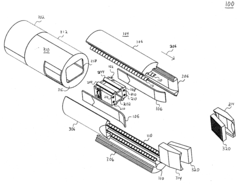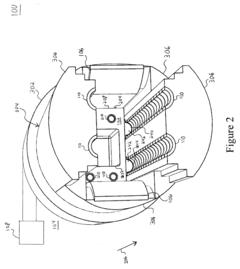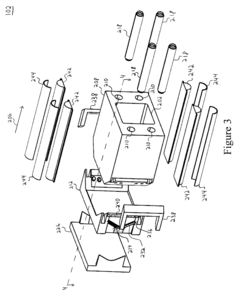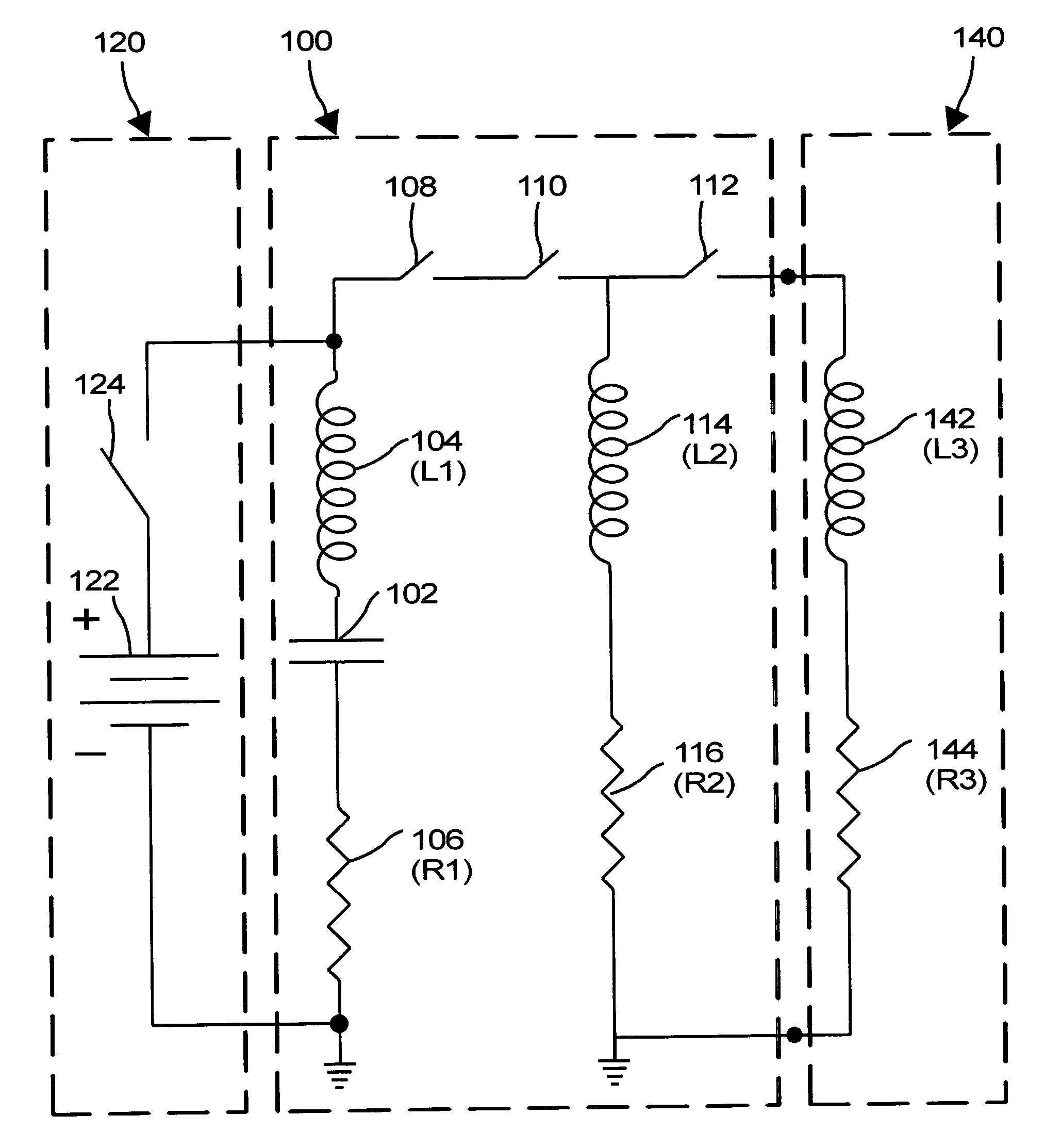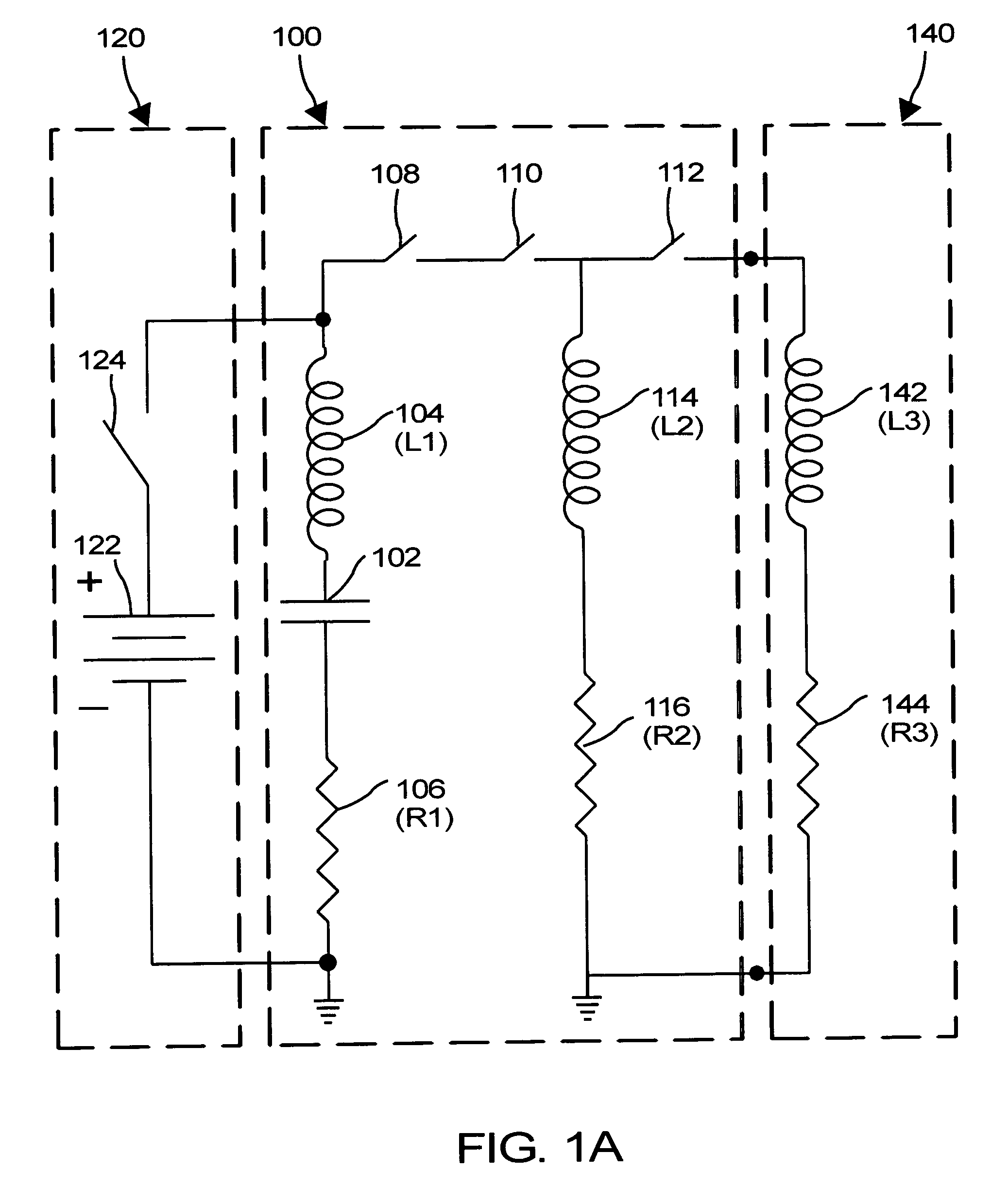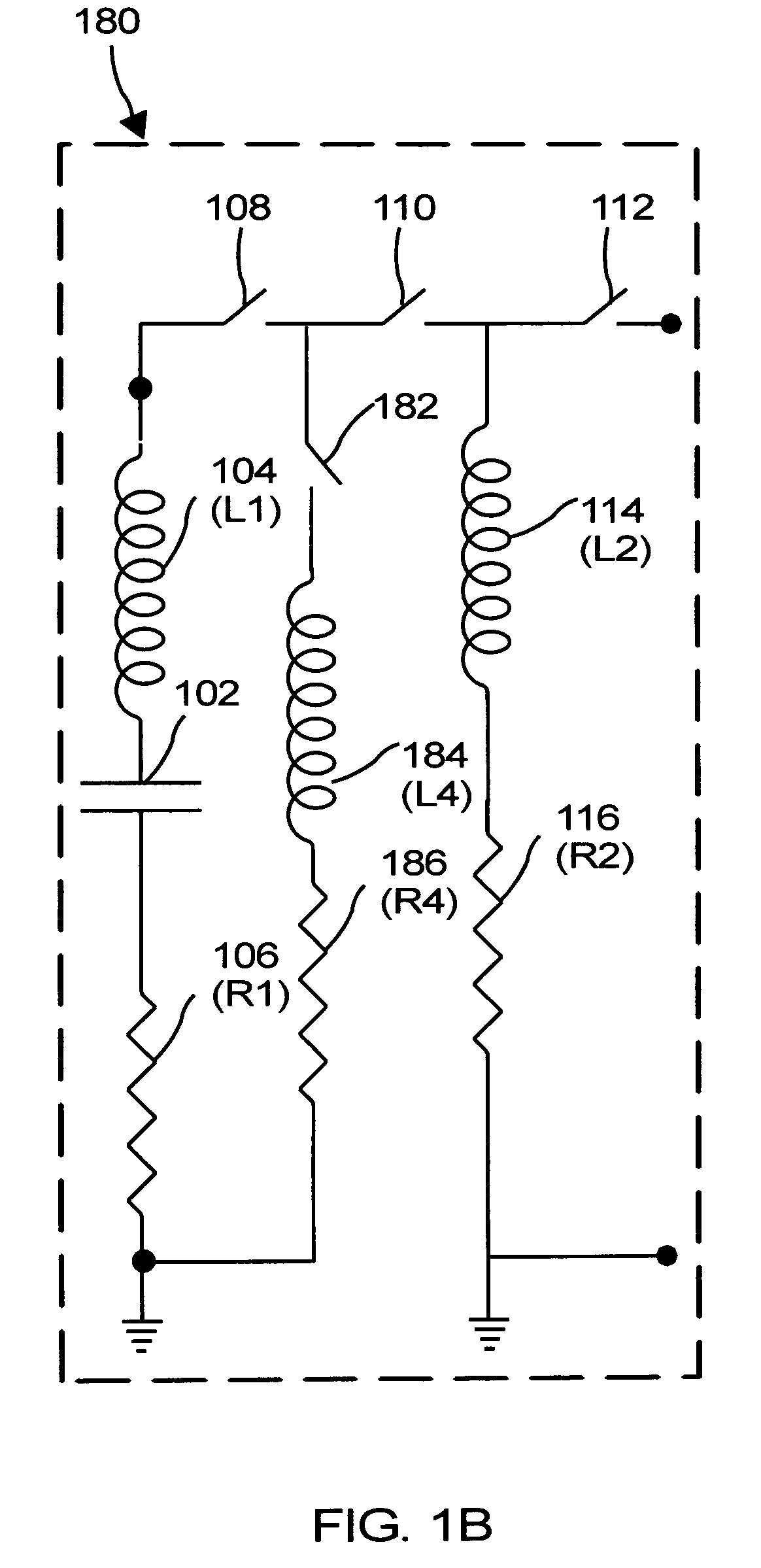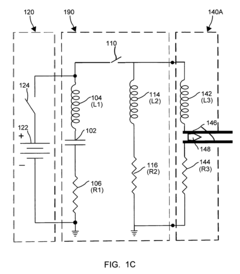Nuclear-Powered Rail Gun Concepts: Viability and Risks
AUG 6, 20259 MIN READ
Generate Your Research Report Instantly with AI Agent
Patsnap Eureka helps you evaluate technical feasibility & market potential.
Nuclear Rail Gun Evolution
The evolution of nuclear-powered rail gun concepts represents a fascinating intersection of nuclear technology and advanced weaponry. This progression can be traced through several key stages, each marked by significant technological advancements and shifting strategic considerations.
In the early stages of development, the concept of nuclear-powered rail guns emerged as a theoretical extension of conventional electromagnetic rail gun technology. The primary motivation was to overcome the enormous power requirements that limited the effectiveness and practicality of traditional rail guns. Nuclear power, with its high energy density and potential for sustained output, seemed to offer a solution to this fundamental challenge.
The 1960s and 1970s saw initial exploratory research into the feasibility of nuclear-powered rail guns. This period was characterized by conceptual studies and preliminary designs, largely driven by the arms race of the Cold War era. Scientists and military strategists began to envision systems that could harness nuclear energy to propel projectiles at unprecedented velocities, potentially revolutionizing both offensive and defensive military capabilities.
As nuclear technology advanced in the 1980s and 1990s, more concrete proposals for nuclear-powered rail guns began to emerge. These designs typically involved compact nuclear reactors coupled with advanced power conversion systems to generate the massive electrical currents required for rail gun operation. Concurrently, progress in materials science and electromagnetic field manipulation contributed to more efficient rail gun designs, bringing the concept closer to potential realization.
The turn of the millennium marked a shift towards more practical considerations in nuclear rail gun development. Researchers began to grapple with the complex challenges of integrating nuclear power sources with rail gun technology in a manner that would be safe, reliable, and militarily viable. This period saw increased focus on miniaturization of nuclear power systems, advanced cooling technologies, and radiation shielding to make the concept more feasible for deployment.
In recent years, the evolution of nuclear-powered rail gun concepts has been influenced by broader trends in military technology and strategy. The emphasis on precision strike capabilities, hypersonic weapons, and strategic deterrence has kept interest in these systems alive, despite the significant technical and political challenges they present. Advancements in directed energy weapons and alternative power sources have also provided new contexts for evaluating the potential role of nuclear-powered rail guns in future military arsenals.
Throughout this evolution, the viability and risks associated with nuclear-powered rail guns have been subjects of ongoing debate and analysis. While the potential for unprecedented firepower and strategic advantage has driven continued interest, concerns about nuclear proliferation, environmental impact, and operational safety have posed significant obstacles to practical implementation. The evolution of these concepts thus reflects not only technological progress but also changing geopolitical landscapes and ethical considerations surrounding advanced weapons systems.
In the early stages of development, the concept of nuclear-powered rail guns emerged as a theoretical extension of conventional electromagnetic rail gun technology. The primary motivation was to overcome the enormous power requirements that limited the effectiveness and practicality of traditional rail guns. Nuclear power, with its high energy density and potential for sustained output, seemed to offer a solution to this fundamental challenge.
The 1960s and 1970s saw initial exploratory research into the feasibility of nuclear-powered rail guns. This period was characterized by conceptual studies and preliminary designs, largely driven by the arms race of the Cold War era. Scientists and military strategists began to envision systems that could harness nuclear energy to propel projectiles at unprecedented velocities, potentially revolutionizing both offensive and defensive military capabilities.
As nuclear technology advanced in the 1980s and 1990s, more concrete proposals for nuclear-powered rail guns began to emerge. These designs typically involved compact nuclear reactors coupled with advanced power conversion systems to generate the massive electrical currents required for rail gun operation. Concurrently, progress in materials science and electromagnetic field manipulation contributed to more efficient rail gun designs, bringing the concept closer to potential realization.
The turn of the millennium marked a shift towards more practical considerations in nuclear rail gun development. Researchers began to grapple with the complex challenges of integrating nuclear power sources with rail gun technology in a manner that would be safe, reliable, and militarily viable. This period saw increased focus on miniaturization of nuclear power systems, advanced cooling technologies, and radiation shielding to make the concept more feasible for deployment.
In recent years, the evolution of nuclear-powered rail gun concepts has been influenced by broader trends in military technology and strategy. The emphasis on precision strike capabilities, hypersonic weapons, and strategic deterrence has kept interest in these systems alive, despite the significant technical and political challenges they present. Advancements in directed energy weapons and alternative power sources have also provided new contexts for evaluating the potential role of nuclear-powered rail guns in future military arsenals.
Throughout this evolution, the viability and risks associated with nuclear-powered rail guns have been subjects of ongoing debate and analysis. While the potential for unprecedented firepower and strategic advantage has driven continued interest, concerns about nuclear proliferation, environmental impact, and operational safety have posed significant obstacles to practical implementation. The evolution of these concepts thus reflects not only technological progress but also changing geopolitical landscapes and ethical considerations surrounding advanced weapons systems.
Military Demand Analysis
The military demand for advanced weaponry, particularly in the realm of long-range precision strike capabilities, has been steadily increasing in recent years. Nuclear-powered rail gun concepts have garnered significant attention due to their potential to revolutionize naval and land-based artillery systems. These weapons offer the promise of extended range, increased projectile velocity, and enhanced destructive power compared to conventional artillery.
The United States Navy, in particular, has shown keen interest in rail gun technology as part of its efforts to modernize naval warfare capabilities. The ability to strike targets at distances exceeding 100 nautical miles with pinpoint accuracy aligns with the strategic goals of maintaining naval superiority and projecting power in contested environments. Other major military powers, including China and Russia, have also invested in research and development of electromagnetic weapon systems, indicating a global recognition of the potential advantages offered by this technology.
The demand for nuclear-powered rail guns is driven by several key factors. First, the need for increased range and lethality in naval engagements, especially in the context of anti-access/area denial (A2/AD) strategies employed by potential adversaries. Second, the desire to reduce reliance on expensive and potentially vulnerable guided missiles for long-range strikes. Third, the potential for rail guns to serve as a cost-effective alternative to traditional naval guns, with the added benefit of eliminating the need for explosive propellants and reducing the risk of accidental detonations aboard ships.
However, the military demand for nuclear-powered rail gun concepts is tempered by several considerations. The integration of nuclear power systems into naval vessels or land-based platforms presents significant technical and safety challenges. Additionally, the high power requirements and thermal management issues associated with rail gun technology remain significant hurdles to overcome.
The potential risks associated with nuclear-powered rail guns, including radiation exposure and the environmental impact of potential accidents, must be carefully weighed against their perceived military advantages. Furthermore, the development and deployment of such weapons could potentially escalate arms races and trigger international tensions, particularly given the dual nature of nuclear technology.
Despite these challenges, the military demand for advanced long-range strike capabilities remains strong. As geopolitical tensions continue to evolve and the nature of warfare shifts towards more technologically advanced systems, the interest in nuclear-powered rail gun concepts is likely to persist. Military planners and strategists will continue to evaluate the viability and risks associated with these weapons, balancing their potential benefits against the technical, safety, and political challenges they present.
The United States Navy, in particular, has shown keen interest in rail gun technology as part of its efforts to modernize naval warfare capabilities. The ability to strike targets at distances exceeding 100 nautical miles with pinpoint accuracy aligns with the strategic goals of maintaining naval superiority and projecting power in contested environments. Other major military powers, including China and Russia, have also invested in research and development of electromagnetic weapon systems, indicating a global recognition of the potential advantages offered by this technology.
The demand for nuclear-powered rail guns is driven by several key factors. First, the need for increased range and lethality in naval engagements, especially in the context of anti-access/area denial (A2/AD) strategies employed by potential adversaries. Second, the desire to reduce reliance on expensive and potentially vulnerable guided missiles for long-range strikes. Third, the potential for rail guns to serve as a cost-effective alternative to traditional naval guns, with the added benefit of eliminating the need for explosive propellants and reducing the risk of accidental detonations aboard ships.
However, the military demand for nuclear-powered rail gun concepts is tempered by several considerations. The integration of nuclear power systems into naval vessels or land-based platforms presents significant technical and safety challenges. Additionally, the high power requirements and thermal management issues associated with rail gun technology remain significant hurdles to overcome.
The potential risks associated with nuclear-powered rail guns, including radiation exposure and the environmental impact of potential accidents, must be carefully weighed against their perceived military advantages. Furthermore, the development and deployment of such weapons could potentially escalate arms races and trigger international tensions, particularly given the dual nature of nuclear technology.
Despite these challenges, the military demand for advanced long-range strike capabilities remains strong. As geopolitical tensions continue to evolve and the nature of warfare shifts towards more technologically advanced systems, the interest in nuclear-powered rail gun concepts is likely to persist. Military planners and strategists will continue to evaluate the viability and risks associated with these weapons, balancing their potential benefits against the technical, safety, and political challenges they present.
Technical Hurdles
The development of nuclear-powered rail gun concepts faces several significant technical hurdles that must be overcome to ensure viability and mitigate risks. One of the primary challenges is the integration of a compact nuclear power source with the rail gun system. Traditional nuclear reactors are too large and heavy for mobile applications, necessitating the development of miniaturized nuclear power units capable of generating the immense electrical energy required for rail gun operation.
Another critical technical obstacle is the management of extreme heat generated during the rail gun's firing process. The intense electrical currents used to accelerate projectiles produce enormous amounts of heat, which can cause rapid degradation of the rail gun's components. This issue is further compounded by the additional heat produced by the nuclear power source, creating a complex thermal management problem that requires innovative cooling solutions.
The materials used in rail gun construction present another significant challenge. The rails and other components must withstand extreme mechanical stresses, high temperatures, and intense electromagnetic fields. Current materials often suffer from rapid wear and erosion, limiting the operational lifespan of the weapon. Developing new, more resilient materials that can maintain structural integrity under these harsh conditions is crucial for the long-term viability of nuclear-powered rail guns.
Electromagnetic interference (EMI) poses a substantial technical hurdle for nuclear-powered rail gun systems. The intense electromagnetic fields generated during firing can disrupt sensitive electronic systems, potentially affecting both the rail gun's own control systems and nearby equipment. Effective EMI shielding and hardening techniques must be developed to ensure reliable operation and prevent unintended consequences.
Safety considerations present another set of technical challenges. The combination of nuclear materials and high-energy weapon systems raises significant concerns about radiation shielding, containment, and fail-safe mechanisms. Ensuring the safety of personnel and preventing accidental discharge or nuclear incidents requires sophisticated engineering solutions and rigorous safety protocols.
The precision and accuracy of nuclear-powered rail guns also present technical difficulties. Maintaining consistent projectile velocity and trajectory across multiple firings is challenging due to variations in power output, rail wear, and environmental factors. Advanced control systems and real-time adjustment mechanisms must be developed to achieve the desired accuracy and repeatability.
Lastly, the integration of nuclear-powered rail guns into existing military platforms and infrastructure poses significant technical hurdles. Issues such as weight distribution, power management, and compatibility with current command and control systems must be addressed to make these weapons practical for deployment in various operational scenarios.
Another critical technical obstacle is the management of extreme heat generated during the rail gun's firing process. The intense electrical currents used to accelerate projectiles produce enormous amounts of heat, which can cause rapid degradation of the rail gun's components. This issue is further compounded by the additional heat produced by the nuclear power source, creating a complex thermal management problem that requires innovative cooling solutions.
The materials used in rail gun construction present another significant challenge. The rails and other components must withstand extreme mechanical stresses, high temperatures, and intense electromagnetic fields. Current materials often suffer from rapid wear and erosion, limiting the operational lifespan of the weapon. Developing new, more resilient materials that can maintain structural integrity under these harsh conditions is crucial for the long-term viability of nuclear-powered rail guns.
Electromagnetic interference (EMI) poses a substantial technical hurdle for nuclear-powered rail gun systems. The intense electromagnetic fields generated during firing can disrupt sensitive electronic systems, potentially affecting both the rail gun's own control systems and nearby equipment. Effective EMI shielding and hardening techniques must be developed to ensure reliable operation and prevent unintended consequences.
Safety considerations present another set of technical challenges. The combination of nuclear materials and high-energy weapon systems raises significant concerns about radiation shielding, containment, and fail-safe mechanisms. Ensuring the safety of personnel and preventing accidental discharge or nuclear incidents requires sophisticated engineering solutions and rigorous safety protocols.
The precision and accuracy of nuclear-powered rail guns also present technical difficulties. Maintaining consistent projectile velocity and trajectory across multiple firings is challenging due to variations in power output, rail wear, and environmental factors. Advanced control systems and real-time adjustment mechanisms must be developed to achieve the desired accuracy and repeatability.
Lastly, the integration of nuclear-powered rail guns into existing military platforms and infrastructure poses significant technical hurdles. Issues such as weight distribution, power management, and compatibility with current command and control systems must be addressed to make these weapons practical for deployment in various operational scenarios.
Current Rail Gun Designs
01 Power supply and energy storage for rail guns
Nuclear power could potentially provide the high energy requirements for rail guns. Advanced energy storage systems and power management techniques are crucial for delivering the intense bursts of electricity needed to accelerate projectiles to hypersonic speeds. This includes capacitor banks, pulse forming networks, and efficient power distribution systems.- Power supply and energy storage for rail guns: Nuclear power could potentially provide the high energy requirements for rail guns. This involves developing compact nuclear reactors or using nuclear batteries to generate and store the massive amounts of electrical energy needed to launch projectiles at hypersonic speeds. The challenge lies in miniaturizing nuclear power sources while ensuring safety and efficiency.
- Rail gun design and projectile acceleration: Advancements in rail gun design focus on improving the electromagnetic acceleration of projectiles. This includes optimizing rail configurations, developing better conductive materials, and enhancing the magnetic field generation. The goal is to achieve higher muzzle velocities and increased range while minimizing rail erosion and maximizing efficiency.
- Thermal management and cooling systems: Effective thermal management is crucial for nuclear-powered rail guns due to the extreme heat generated during operation. This involves developing advanced cooling systems to dissipate heat from both the nuclear power source and the rail gun components. Innovations in heat-resistant materials and efficient coolant circulation are key areas of focus.
- Integration and control systems: Integrating nuclear power sources with rail gun systems requires sophisticated control and monitoring systems. This includes developing advanced electronics and software for power management, firing control, and safety protocols. The focus is on creating reliable, responsive, and fail-safe systems that can operate under extreme conditions.
- Safety and environmental considerations: Ensuring the safety of nuclear-powered rail guns is paramount. This involves developing containment systems for the nuclear components, radiation shielding, and fail-safe mechanisms. Environmental impact assessments and strategies for safe operation and disposal of nuclear materials are also critical considerations in determining the viability of these systems.
02 Rail gun design and materials
Innovations in rail gun design focus on improving durability, reducing wear, and enhancing performance. This includes advanced materials for rails and projectiles, electromagnetic field shaping, and barrel designs that can withstand extreme temperatures and pressures. Cooling systems and thermal management are also critical for maintaining operational efficiency.Expand Specific Solutions03 Projectile design and guidance systems
Specialized projectiles for rail guns are designed to withstand extreme acceleration forces and maintain stability during flight. Advanced guidance systems and smart projectiles can improve accuracy and range. This may include onboard electronics, fin stabilization, and aerodynamic designs optimized for hypersonic speeds.Expand Specific Solutions04 Integration with naval and land-based platforms
Adapting rail gun technology for practical military applications involves integrating these systems with existing naval vessels and land-based platforms. This includes addressing size and weight constraints, developing suitable mounting and stabilization systems, and ensuring compatibility with existing command and control infrastructures.Expand Specific Solutions05 Safety and environmental considerations
Implementing nuclear-powered rail guns requires addressing significant safety and environmental concerns. This includes radiation shielding, containment systems for nuclear materials, and fail-safe mechanisms. Environmental impact assessments and compliance with international regulations on nuclear technology are also crucial considerations for the viability of such systems.Expand Specific Solutions
Key Defense Contractors
The nuclear-powered rail gun concept is in an early developmental stage, with limited market size and low technological maturity. The industry is primarily driven by defense and research institutions, with major players including Raytheon, Boeing, and Naval Research Laboratory. These organizations are exploring the viability and potential applications of this advanced weapon system. However, significant technical challenges remain, particularly in miniaturizing nuclear power sources and managing thermal issues. While some progress has been made in electromagnetic rail gun technology, integrating nuclear power adds complexity and safety concerns. The competitive landscape is currently focused on research and proof-of-concept demonstrations rather than commercial production.
Raytheon Co.
Technical Solution: Raytheon's approach to nuclear-powered railguns focuses on a modular, scalable design suitable for various platforms. Their concept utilizes a liquid fluoride thorium reactor (LFTR) to generate power, chosen for its inherent safety features and high energy density. The system incorporates advanced power storage technologies, including supercapacitors and flywheels, to manage the high-current pulses required for railgun operation[5]. Raytheon has also developed sophisticated targeting and fire control systems optimized for the hypersonic projectiles launched by their railgun, enhancing accuracy and effectiveness[6].
Strengths: Modular design allows for easier upgrades and maintenance, inherently safer thorium reactor technology, advanced targeting systems. Weaknesses: Thorium reactor technology still in early stages of development, potential for electromagnetic interference with other systems.
Naval Research Laboratory
Technical Solution: The Naval Research Laboratory (NRL) has been at the forefront of railgun technology development for naval applications. Their concept integrates a compact nuclear reactor to power an electromagnetic railgun system. The design utilizes a high-temperature gas-cooled reactor (HTGR) to generate the massive amounts of electricity required for railgun operation. This setup allows for sustained high-energy shots without the need for large capacitor banks[1]. The system employs advanced materials like carbon-carbon composites for rail construction to withstand the extreme temperatures and pressures involved. NRL's approach also incorporates a novel cooling system using liquid metal to manage thermal loads efficiently[2].
Strengths: Continuous high-power output, compact design suitable for naval vessels, eliminates need for explosive propellants. Weaknesses: Complex integration of nuclear and electromagnetic systems, potential nuclear safety concerns, high development and implementation costs.
Nuclear Power Integration
Railgun system
PatentInactiveUS20100194212A1
Innovation
- A railgun system that uses liquid metal, preferably aluminum or aluminum alloys, introduced into a gap between the armature and electrically conductive rails to reduce contact resistance and enhance acceleration, with features like a chamber for containing the liquid metal, a port for directing it into the gap, and a backing to conduct current and maintain the gap, optimizing the Lorentz force for speed.
Inductive pulse forming network for high-current, high-power applications
PatentInactiveUS7675198B1
Innovation
- An inductive PFN design that stores electrical energy in a low-voltage, high-energy density network capacitor and converts it into a magnetic field to supply high-current pulses, using a network inductor and switches to manage energy transfer, allowing for smaller, lighter, and safer power delivery systems.
Safety and Regulations
The development and potential deployment of nuclear-powered rail gun concepts raise significant safety concerns and regulatory challenges. Given the high-energy nature of rail guns and the inherent risks associated with nuclear power, a comprehensive safety framework and stringent regulations are essential to ensure the responsible development and use of this technology.
Safety considerations for nuclear-powered rail guns encompass both the nuclear power source and the rail gun system itself. The nuclear power component requires robust containment systems to prevent radiation leaks and ensure safe operation under various conditions, including potential combat scenarios. Shielding technologies and fail-safe mechanisms must be implemented to protect personnel and the environment from radiation exposure.
The rail gun system presents its own set of safety challenges. The extreme velocities and energies involved in launching projectiles demand advanced materials and precise engineering to prevent structural failures and ensure consistent performance. Safety protocols must address the risks of misfires, overheating, and electromagnetic radiation generated during operation.
Regulatory frameworks for nuclear-powered rail guns will likely draw from existing regulations in both the nuclear and defense sectors. International agreements on nuclear non-proliferation and weapons of mass destruction will need to be considered and potentially updated to account for this new technology. National regulatory bodies will need to develop specific guidelines for the design, testing, and deployment of nuclear-powered rail guns.
Environmental impact assessments will be crucial in the regulatory process. The potential for radioactive contamination in the event of a malfunction or combat damage must be thoroughly evaluated and mitigated. Regulations should mandate comprehensive environmental monitoring systems and emergency response protocols.
Personnel safety regulations will need to address the unique risks associated with operating and maintaining nuclear-powered rail guns. This includes specialized training programs, protective equipment requirements, and exposure monitoring for both radiation and electromagnetic fields.
The transportation and storage of nuclear-powered rail gun systems will require careful consideration in regulatory frameworks. Secure facilities and specialized transport protocols will be necessary to prevent unauthorized access and ensure safety during non-operational periods.
As the technology evolves, regulations must remain adaptable to address new safety concerns and technological advancements. Regular review and updating of safety standards and regulatory requirements will be essential to keep pace with the rapid development in this field.
Safety considerations for nuclear-powered rail guns encompass both the nuclear power source and the rail gun system itself. The nuclear power component requires robust containment systems to prevent radiation leaks and ensure safe operation under various conditions, including potential combat scenarios. Shielding technologies and fail-safe mechanisms must be implemented to protect personnel and the environment from radiation exposure.
The rail gun system presents its own set of safety challenges. The extreme velocities and energies involved in launching projectiles demand advanced materials and precise engineering to prevent structural failures and ensure consistent performance. Safety protocols must address the risks of misfires, overheating, and electromagnetic radiation generated during operation.
Regulatory frameworks for nuclear-powered rail guns will likely draw from existing regulations in both the nuclear and defense sectors. International agreements on nuclear non-proliferation and weapons of mass destruction will need to be considered and potentially updated to account for this new technology. National regulatory bodies will need to develop specific guidelines for the design, testing, and deployment of nuclear-powered rail guns.
Environmental impact assessments will be crucial in the regulatory process. The potential for radioactive contamination in the event of a malfunction or combat damage must be thoroughly evaluated and mitigated. Regulations should mandate comprehensive environmental monitoring systems and emergency response protocols.
Personnel safety regulations will need to address the unique risks associated with operating and maintaining nuclear-powered rail guns. This includes specialized training programs, protective equipment requirements, and exposure monitoring for both radiation and electromagnetic fields.
The transportation and storage of nuclear-powered rail gun systems will require careful consideration in regulatory frameworks. Secure facilities and specialized transport protocols will be necessary to prevent unauthorized access and ensure safety during non-operational periods.
As the technology evolves, regulations must remain adaptable to address new safety concerns and technological advancements. Regular review and updating of safety standards and regulatory requirements will be essential to keep pace with the rapid development in this field.
Environmental Impact
The environmental impact of nuclear-powered rail gun concepts is a critical consideration that requires thorough assessment. The use of nuclear power in this context raises significant concerns regarding radiation exposure, waste management, and potential ecological disruption.
Radiation exposure is a primary environmental risk associated with nuclear-powered rail guns. During normal operation, there is a potential for low-level radiation emissions, which could affect surrounding ecosystems and human populations. In the event of an accident or malfunction, the risk of more severe radiation release increases, potentially leading to long-term environmental contamination and health hazards for both wildlife and nearby communities.
Nuclear waste management presents another substantial environmental challenge. The operation of nuclear-powered rail guns would generate radioactive waste that requires careful handling, storage, and disposal. The long-term storage of this waste poses risks of groundwater contamination and soil pollution if not properly managed. Additionally, the transportation of nuclear materials to and from rail gun facilities introduces further environmental risks along transit routes.
The construction and operation of nuclear-powered rail gun facilities could lead to habitat destruction and ecosystem disruption. These installations would likely require significant land area, potentially encroaching on natural habitats and affecting local biodiversity. The thermal discharge from cooling systems could also impact aquatic ecosystems if not properly managed, altering water temperatures and affecting marine life.
Electromagnetic emissions from rail gun operations may have unforeseen effects on local wildlife, particularly migratory birds and marine species that rely on natural electromagnetic fields for navigation. The long-term ecological consequences of such disturbances are not yet fully understood and warrant careful study.
In the event of a catastrophic failure or military attack on a nuclear-powered rail gun facility, the environmental consequences could be severe and long-lasting. The potential for widespread radioactive contamination could render large areas uninhabitable for extended periods, causing irreparable damage to ecosystems and posing significant public health risks.
Mitigation strategies must be developed to address these environmental concerns. These may include advanced containment systems, robust safety protocols, and comprehensive environmental monitoring programs. Additionally, research into alternative power sources that could provide the necessary energy output with reduced environmental risks should be prioritized.
The environmental impact assessment for nuclear-powered rail gun concepts must also consider the full lifecycle of these systems, from resource extraction for construction materials to eventual decommissioning. This holistic approach is essential for understanding the true environmental cost and developing sustainable implementation strategies.
Radiation exposure is a primary environmental risk associated with nuclear-powered rail guns. During normal operation, there is a potential for low-level radiation emissions, which could affect surrounding ecosystems and human populations. In the event of an accident or malfunction, the risk of more severe radiation release increases, potentially leading to long-term environmental contamination and health hazards for both wildlife and nearby communities.
Nuclear waste management presents another substantial environmental challenge. The operation of nuclear-powered rail guns would generate radioactive waste that requires careful handling, storage, and disposal. The long-term storage of this waste poses risks of groundwater contamination and soil pollution if not properly managed. Additionally, the transportation of nuclear materials to and from rail gun facilities introduces further environmental risks along transit routes.
The construction and operation of nuclear-powered rail gun facilities could lead to habitat destruction and ecosystem disruption. These installations would likely require significant land area, potentially encroaching on natural habitats and affecting local biodiversity. The thermal discharge from cooling systems could also impact aquatic ecosystems if not properly managed, altering water temperatures and affecting marine life.
Electromagnetic emissions from rail gun operations may have unforeseen effects on local wildlife, particularly migratory birds and marine species that rely on natural electromagnetic fields for navigation. The long-term ecological consequences of such disturbances are not yet fully understood and warrant careful study.
In the event of a catastrophic failure or military attack on a nuclear-powered rail gun facility, the environmental consequences could be severe and long-lasting. The potential for widespread radioactive contamination could render large areas uninhabitable for extended periods, causing irreparable damage to ecosystems and posing significant public health risks.
Mitigation strategies must be developed to address these environmental concerns. These may include advanced containment systems, robust safety protocols, and comprehensive environmental monitoring programs. Additionally, research into alternative power sources that could provide the necessary energy output with reduced environmental risks should be prioritized.
The environmental impact assessment for nuclear-powered rail gun concepts must also consider the full lifecycle of these systems, from resource extraction for construction materials to eventual decommissioning. This holistic approach is essential for understanding the true environmental cost and developing sustainable implementation strategies.
Unlock deeper insights with Patsnap Eureka Quick Research — get a full tech report to explore trends and direct your research. Try now!
Generate Your Research Report Instantly with AI Agent
Supercharge your innovation with Patsnap Eureka AI Agent Platform!
